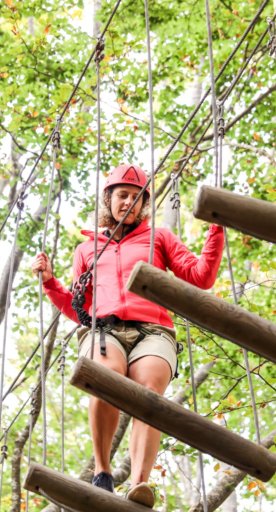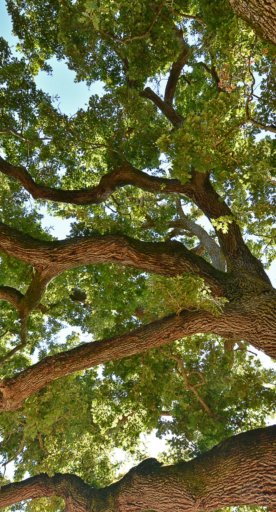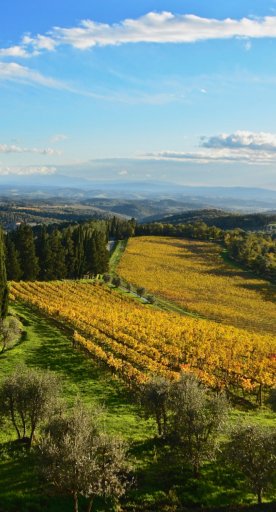

Getting ready for a trip to Capraia Island
Tips on packing and what to bring with you
"Imagine a big rock of lava, eight kilometres long and four wide, with no beaches, no umbrellas, no traffic lights and clubs. On the island there's a small harbour and a little village of small, colourful houses. One road, a castle, two towers, a traffic cop, three policemen, a postman, two grocery stores, four fishermen, a school, a priest, many cats, plenty of Mediterranean vegetation, fish and birds and hundreds of mouflons."
Lorenzo Dotti, painter and naturalist.
-
1.Best time to visit Capraia
-
2.How to pack for a trip to Capraia
-
3.How to get around in Capraia
-
4.Local food

Capraia is the third biggest island in the Tuscan Archipelago, measuring 19.3 km² – 1900 ha and it's the farthest from the coast. 54 km separate it from the mainland port in Livorno and it's the only island formed by a volcanic eruption that happened 9 million years ago which produced the island’s impressive red rock that is most visible at Cala Rossa.
The ferry takes almost 3 hours to get to Capraia Island. The trip helps your mind slow down and cast off any stressful thoughts. The Phoenicians, Greeks, Etruscans and Romans have all inhabited Capraia. The island has undergone invasions by Saracen and Turkish pirates, it has housed a community of monks and it has been a penal colony. From the end of the third millennium BC until today its appearance has not changed much and it’s no coincidence that it’s known as 'Wild Island'.

Around 300 people live on the island and usually at Christmas time there are 80 people on the island. There are only two tiny villages and both overlook a bay facing east. One is actually the harbour area and the other one is the oldest village protected by San Giorgio fortress. The only paved road on the island connects these two settlements and it’s about 800 meters long. Only 3% of the island is populated, the other 97% is a National Park or the area of the ex-prison (active from 1873 to 1986). Of the more than 650 plant species surveyed, nearly 3% are endemic. About 77% of the territory is protected, excluding the area around the harbour and the upper town. Only a part of the coast is inaccessible (zone 1) and is located on the opposite side of the harbour.
Maybe now you can understand why it's called 'Wild Island'. If you like adventure, trekking, sailing and off-the-beaten-path sights, you’ll definitively fall in love with Capraia.
Best time to visit Capraia

Spring is perfect for hiking, flowers and bird watching. Summer is perfect for sailing, tanning and to see the island at the height of its vitality but keep in mind that it gets very hot during the day, especially in the central part of the island, so it's suggested to hike early in the morning. If you would like to combine hiking, flowers and swimming, go from mid-May to early July. If you're a foodie with a penchant for seafood, we suggest visiting between September and November, when the sea is still warm from the summer, many of the tourists have gone and the Squid Fest (Sagra del Totano) takes place on the island. Late autumn and winter are good for hikers and solitude seekers.
How to pack for a trip to Capraia

The first thing that you have to remember is to pack light. You won’t need fancy dresses, heels and fanciful beach clothes. Here are some things you shouldn’t forget; a sunhat, high protection sunscreen, walking shoes, comfortable clothes, sea shoes for the rocks, backpack, antiseptic (can be useful against jellyfish stings), sense of adventure and a camera (to capture the breathtaking landscapes).
How to get around in Capraia

The best way to explore Capraia is on foot or by boat. Except for Mortola, there's no sand on any of the beaches. A boat is a must-do because there are no roads inland, only paths.
You can join a boat tour in groups of 6 to 12 people: it’s a good way to have an introduction and to discover hidden beaches with crystal clear waters. These tours usually take place in morning, at noon, in early afternoon, late in the day and they last from 2 to 4 hours. Generally you don’t need to pre-book a tour, especially in low season; just ask around as soon as you get off the ferry. You can also rent a small boat, up to 6 people, even if you don’t have a nautical license. To go from the harbour to the upper town you need to tackle a hill, but there is a shuttle that goes back and forth every twenty minutes from 6am to 10pm.
Local food

The typical dishes of the island are characterized by simple and authentic flavours. Fish is the star of all dishes and here the organic wine estate La Piana produces two excellent types of Tuscan Aleatico, a Vermentino and a brandy Aleatico. You can taste myrtle liqueur, marmalades and Fecolino cake, a locally-made cake made without yeast and butter.













































































